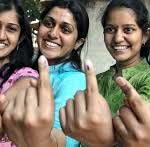 By Nageshwar Patnaik in Bhubaneswar, August 17, 2024: The Parliament approved the 2024-25 Budget on August 8 with Rajya Sabha returning the relevant pieces of legislation to Lok Sabha. This was the inaugural budget of the 18th Lok Sabha, which have more misses than hits. Social sector and welfare schemes have been virtually relegated to the background while the budget has given a boost to capital expenditure with a growth of 28.17% in 2023-24.
By Nageshwar Patnaik in Bhubaneswar, August 17, 2024: The Parliament approved the 2024-25 Budget on August 8 with Rajya Sabha returning the relevant pieces of legislation to Lok Sabha. This was the inaugural budget of the 18th Lok Sabha, which have more misses than hits. Social sector and welfare schemes have been virtually relegated to the background while the budget has given a boost to capital expenditure with a growth of 28.17% in 2023-24.
The objectives of the government budget are reallocation of resources evenly across the nation. reducing inequality in terms of earnings and wealth generation, generation of employment opportunities. redistribution of activities, proper management of the public enterprises and contributing to the economic growth of the country.
Finance Minister Nirmala Sitharaman’s solitary mention of the word ‘welfare’ clearly signaled that the Union Budget 2024-25 would have little policy commitment in allocations to social sector. The main priority of the budget is apparently aimed at improving the “ease of living” for all citizens. The budget was supposed to focus on four key pillars — annadata (farmers), mahilayen (women), gareeb (poor) and yuva (youth),
My previous article in this daily on August 6, 2024 titled “BUDGET 2024 – HYPE WITHOUT SUBSTANCE,” was the neglect of Annadata (farmers) Sitharaman in her speech claimed that the budget has focused on women empowerment. A proposal for reserving one-third of seats for women in the Lok Sabha and state assemblies was introduced. True, the Gender Budget of 2024-25 presents the highest financial allocation for schemes designed to promote women-led development since the inception of gender budgeting in 2005, at Rs 3.2 lakh crore, up by about 6.8 per cent of the total expenditure budget and around one percent of GDP. It is an increase of almost 37 per cent over the Gender Budget in 2023-24.
Nearly three-fourths of the gender budget is allocated to rural employment under the MGNREGA, affordable housing, education of the girl child, nutrition, and access to water supply, ensuring gender mainstreaming across the government’s flagship public service delivery schemes. Encouragingly, in this FY, the Gender Budget has also introduced a few new programmes, indicating an increasing recognition of the need to ease long-term structural barriers that constrain women’s employment and entrepreneurship.
 Even about 30 crore loans under the Mudra Yojana were disbursed to female entrepreneurs. Under the PM Awas Yojana, women in rural areas now account for 70% of joint or sole ownership of houses. Besides, a proposal for reserving one-third of seats for women in the Lok Sabha and state assemblies was introduced. A new initiative highlighted in the Union budget is the government’s plan to collaborate with industry to establish crèche facilities and hostels for working women. The government’s emphasis on establishing crèche facilities was nothing new as way back in 2017 with the introduction of the landmark Maternity Benefit Amendment Act (MBA Act), the duration of paid maternity leave was extended from 12 to 26 weeks, comprising 8 weeks pre-and 18 weeks post-expected date of delivery in India.
Even about 30 crore loans under the Mudra Yojana were disbursed to female entrepreneurs. Under the PM Awas Yojana, women in rural areas now account for 70% of joint or sole ownership of houses. Besides, a proposal for reserving one-third of seats for women in the Lok Sabha and state assemblies was introduced. A new initiative highlighted in the Union budget is the government’s plan to collaborate with industry to establish crèche facilities and hostels for working women. The government’s emphasis on establishing crèche facilities was nothing new as way back in 2017 with the introduction of the landmark Maternity Benefit Amendment Act (MBA Act), the duration of paid maternity leave was extended from 12 to 26 weeks, comprising 8 weeks pre-and 18 weeks post-expected date of delivery in India.
Women’s participation in India’s labour force has surge dramatically, reflecting a significant leap in gender equality and empowerment. The female labour force participation rate (LFPR) is up by 37% in 2022-23, compared to a mere 23.3% in 2017-18. It is an impressive shift largely driven by rural women, who dominate in agriculture-related roles. After many decades of falling, India’s women’s labour force participation rate (WLFPR) is somewhat trending upwards — rising to 37 per cent in 2022-23 from 23 per cent in 2017-18. This increase is primarily driven by rural women, as rural WLFPRs increased to 41 per cent, with urban WLFPR remaining at 25 per cent.
However, the moot question is that the Budget overlooks about 85% of women workers in the unorganised sector. The clear exclusion of women employed in the informal sector – the most adversely affected in the Indian economy robbing a majuscule section of women an equal stake in India’s socio-political and economic life. It raises important questions pertaining to their rights as working mothers in India, partaking in an important role in their children’s well-being, leaving them to fend for themselves. The monetary and non-monetary provisions, including crèche facilities, are restricted only to the formal sector of the country’s labour force, thereby leaving 52.7% of the total 287 million registered workers in the informal or unorganised sector.
 Even as women remained central to poll promises, and months after the historic Women’s Reservation Bill was passed, they remain on the margins of politics. Women presently make up for nearly half of India’s 95 crore registered voters. One-third of the seats in the Panchayats and municipalities are reserved for women.
Even as women remained central to poll promises, and months after the historic Women’s Reservation Bill was passed, they remain on the margins of politics. Women presently make up for nearly half of India’s 95 crore registered voters. One-third of the seats in the Panchayats and municipalities are reserved for women.
To-day, more than 10 lakh elected women representatives can be found in the local bodies. However, the proportion of women in state legislatures and parliament is relatively lower. They comprise only 15 per cent of lawmakers in Parliament and 10 per cent in the state assemblies. The Constitution (106th Amendment) Act, 2023, reserves one-third of all seats for women in Lok Sabha, State legislative assemblies, and the Legislative Assembly of the National Capital Territory of Delhi, including those reserved for SCs and STs.
However, these provisions of reservation for women in the Lok Sabha, the Legislative Assembly of a State and the Legislative Assembly of the National Capital Territory of Delhi will come into effect after the first census is taken following the commencement of the Constitution (One Hundred and Twenty-eighth Amendment) Act, 2023. The Act is surely a progressive step, but it will only come into effect following the first delimitation or redrawing of constituencies, which cannot take place until after the 2024 elections. This means it cannot be enacted until the elections in 2029.


Leave a Reply
Be the First to Comment!